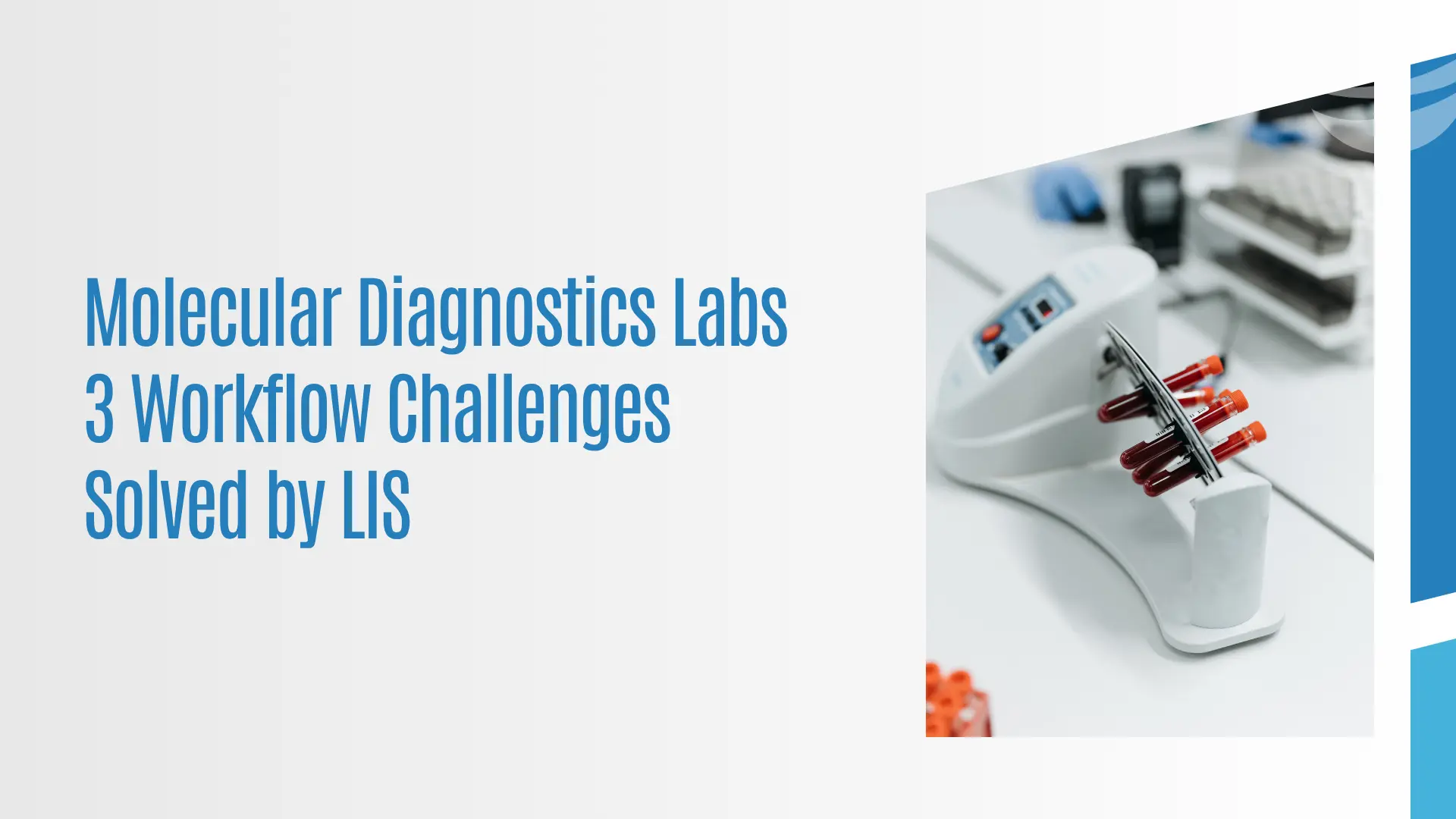How LIS Integrates with Modern Diagnostic Tools
In an era where precision and speed define the quality of medical diagnostics, the Laboratory Information System (LIS) has emerged as a central pillar in healthcare innovation. As diagnostic technologies evolve, laboratories face mounting pressure to deliver accurate results swiftly. Seamless integration of LIS with modern diagnostic tools is transforming how data is captured, analyzed, and utilized—enhancing analytical accuracy across clinical settings.
This article explores how LIS integration improves diagnostic workflows, boosts data integrity, and supports clinical decision-making.
Role of Analytical Accuracy in Diagnostics
Analytical accuracy is the cornerstone of effective diagnostics. It ensures that test results reflect true physiological conditions, minimizing false positives and negatives. Inaccurate results can compromise patient safety and delay appropriate care.
The College of American Pathologists reports that integration with digital pathology and AI-assisted diagnostics improves diagnostic accuracy by up to 20%, especially in complex fields like oncology.
Modern Diagnostic Tools: A Brief Overview
Modern diagnostic environments depend on a wide array of tools, including:
- Automated analyzers (hematology, chemistry, immunoassay)
- Molecular diagnostic platforms (e.g., RT-PCR, NGS)
- Point-of-care testing devices
- Digital pathology systems
- Artificial intelligence (AI) for image analysis and pattern recognition
These tools generate massive volumes of data at high speed. Without proper integration, managing this data becomes a challenge—impacting accuracy and turnaround time.
Benefits of LIS Integration with Diagnostic Tools
1. Reduction in Manual Data Entry Errors
LIS integration automates data transfer between instruments and software platforms. According to a 2022 HIMSS survey, this has led to a 25–40% reduction in manual data entry errors, a major contributor to diagnostic discrepancies.
2. Faster Turnaround Times
Fully integrated LIS platforms have cut diagnostic turnaround times by up to 30%, allowing for faster clinical responses and improved patient outcomes.
3. Higher Diagnostic Accuracy
As noted earlier, AI-driven diagnostics paired with LIS integration have enhanced accuracy by up to 20% in cancer detection cases.
A 2021 study in the Journal of Pathology Informatics found that LIS integration with molecular diagnostic platforms improved result reconciliation accuracy by 18%.
4. Increased Laboratory Throughput
Streamlined workflows and automated result reporting have increased lab throughput by 50–70%. This enables labs to process more tests without compromising quality.
5. Real-Time Quality Control
Automated LIS systems support real-time quality control, helping labs increase compliance with CLIA and CAP standards by 35%, according to recent industry data.
6. Improved Interdisciplinary Coordination
Interoperability with EMRs through standards like HL7 and FHIR has enhanced interdisciplinary case coordination by up to 60%, thanks to near-instantaneous data exchange.
Key Features Enabling Integration
HL7 and FHIR Standards
Health Level 7 (HL7) and Fast Healthcare Interoperability Resources (FHIR) are the backbone of healthcare interoperability. They enable structured, standardized communication between LIS, diagnostic instruments, and EMRs.
Device Middleware
Middleware software bridges the communication gap between diagnostic devices and LIS. It translates data formats and routes information to the appropriate systems.
APIs and Web Services
Modern LIS platforms offer RESTful APIs for seamless integration with third-party systems—enhancing customization and scalability.
Barcode and RFID Integration
By automating sample identification and tracking, these technologies reduce mislabeling and sample loss, both of which can compromise result accuracy.
Use Cases: Real-World Applications of LIS Integration
Molecular Diagnostics Lab
A high-throughput molecular lab integrated its LIS with RT-PCR analyzers during a pandemic. This reduced turnaround time from 48 to 12 hours and improved workflow efficiency and reconciliation accuracy by 18%.
Digital Pathology in Oncology
A hospital integrated digital imaging and AI-based analysis tools with LIS. This not only improved diagnostic accuracy in cancer detection by 20%, but also reduced report turnaround time by 30%.
COVID-19 Response
During the pandemic response, automated LIS systems enabled labs to process thousands of tests daily. Error rates dropped by over 30% due to the elimination of manual entry.
Data Interoperability and HL7 Standards
What is HL7?
HL7 is a set of international standards for the exchange of electronic health information. It ensures LIS platforms can communicate effectively with diagnostic instruments and EMRs.
What is FHIR?
FHIR is a newer, web-based standard that supports mobile, cloud, and real-time healthcare data exchange. It allows for more dynamic LIS-EMR interoperability.
Benefits:
-
- Standardized, vendor-neutral communication
- Faster instrument onboarding
- Reduced integration costs
- Real-time data flow for better clinical decisions
With HL7 and FHIR, LIS platforms now support near-instantaneous data exchange, improving team collaboration and treatment accuracy.
The integration of Laboratory Information Systems with modern diagnostic tools is no longer optional—it’s essential. From reducing error rates and turnaround times to improving diagnostic accuracy and compliance, LIS integration delivers measurable benefits across the lab ecosystem.
As healthcare continues to digitize and personalize, LIS will remain the nerve center of diagnostic innovation—ensuring that labs not only keep pace but lead in delivering accurate, timely, and patient-centered care.




